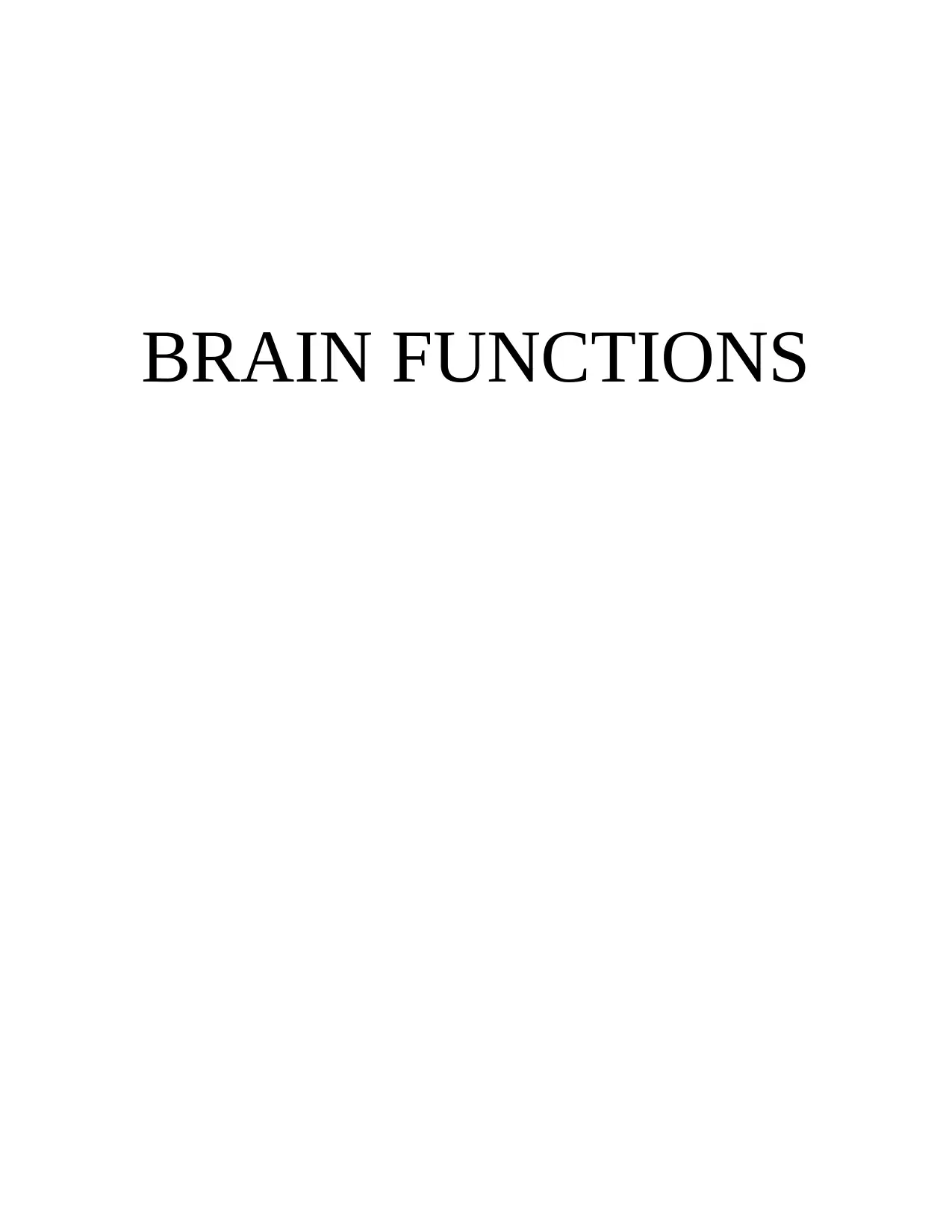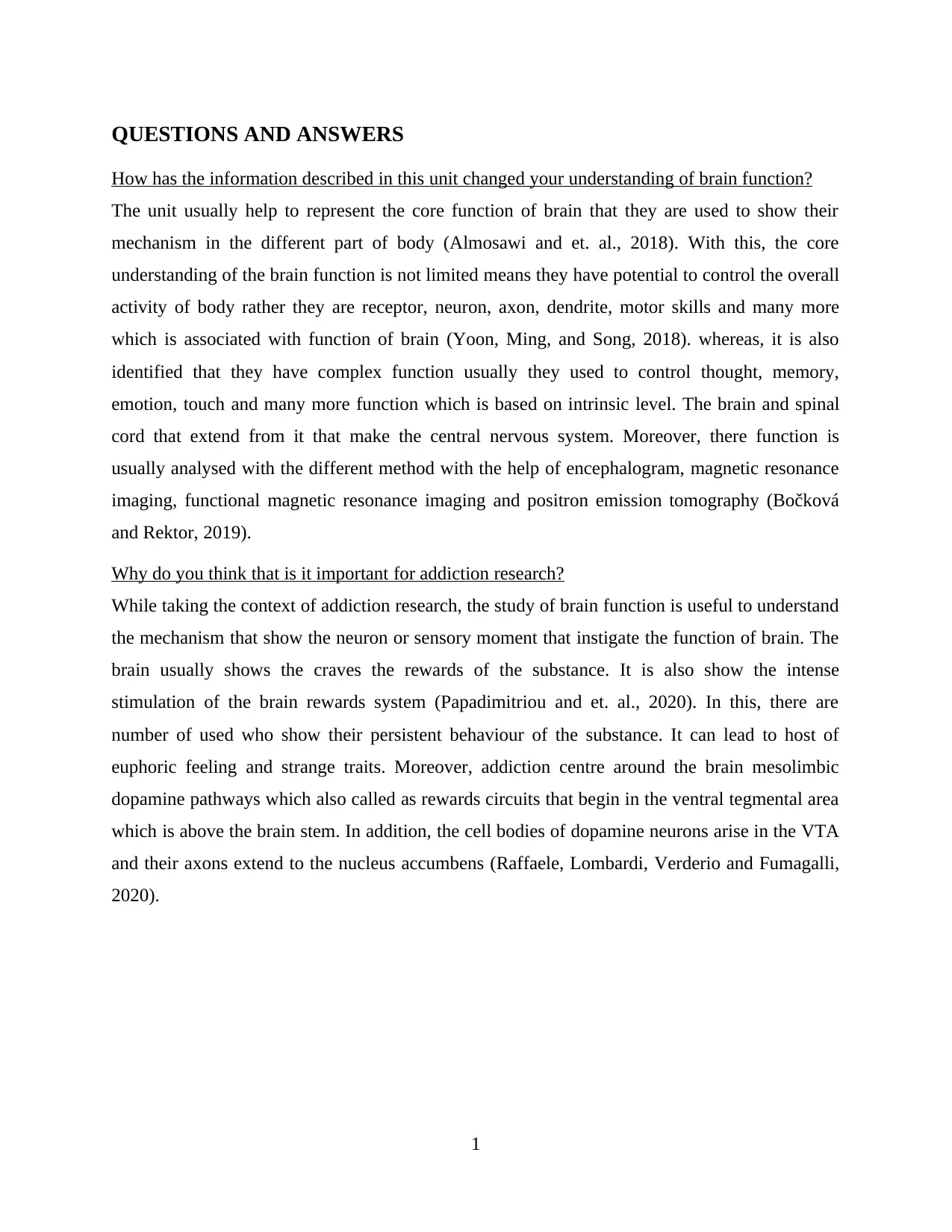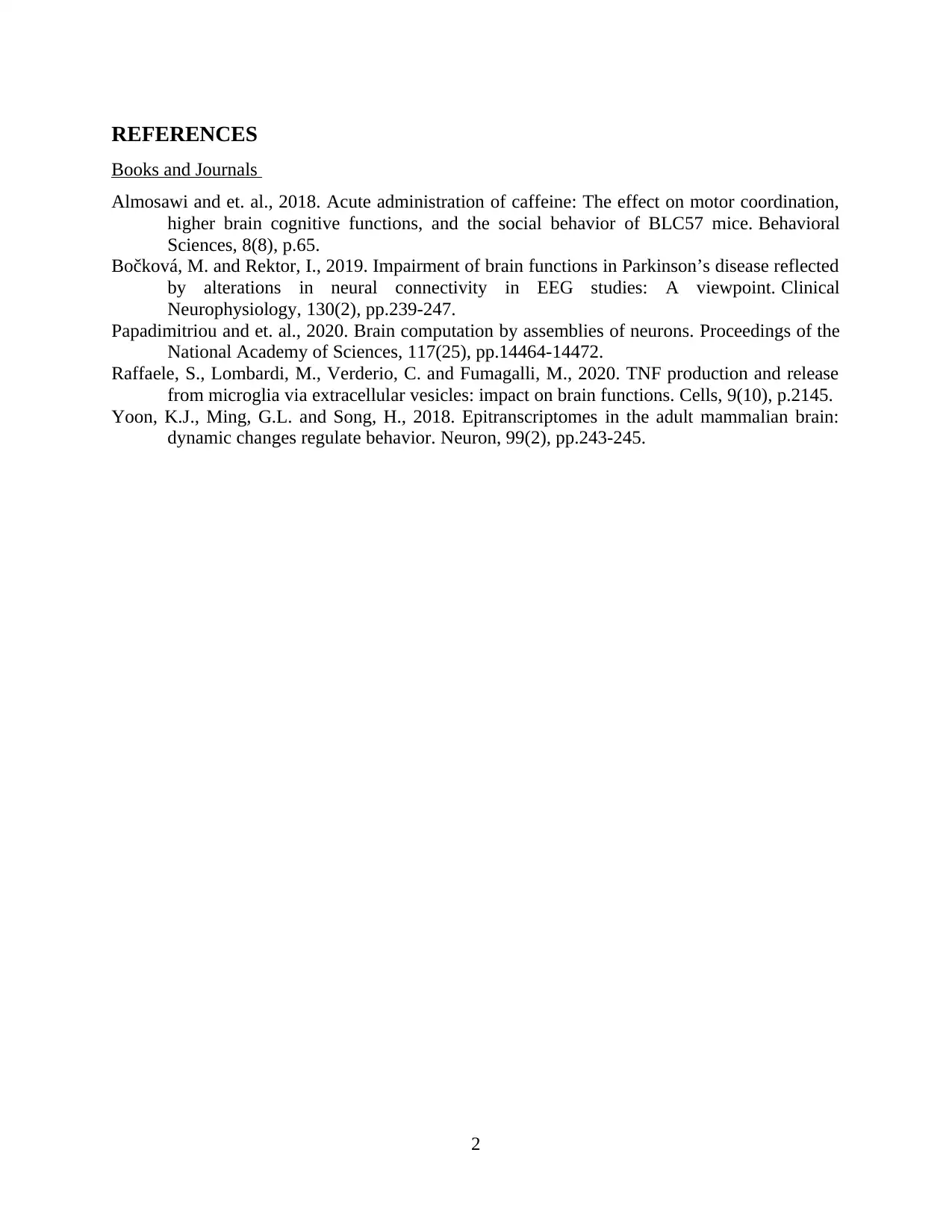Brain Functions: Understanding and Implications for Addiction
VerifiedAdded on 2023/06/12
|4
|611
|180
Essay
AI Summary
This essay provides an overview of brain functions and their significance, particularly in the context of addiction research. It highlights the core functions of the brain, including their role as receptors, neurons, and in controlling various bodily activities like motor skills, thought, memory, and emotion. The essay also delves into the central nervous system, comprising the brain and spinal cord, and methods for analyzing brain function such as encephalograms and magnetic resonance imaging. Furthermore, it emphasizes the importance of understanding brain function in addiction research, particularly concerning how neurons and sensory moments instigate brain activity, leading to cravings and stimulation of the brain's reward system. The mesolimbic dopamine pathways and their role in addiction are also discussed, with references to various studies and research papers.
1 out of 4





![[object Object]](/_next/static/media/star-bottom.7253800d.svg)